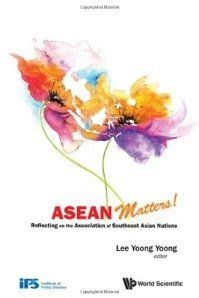As ASEAN progresses ever closer to the ASEAN Community in 2015, studies of its achievements and setbacks are becoming more important for academics, practitioners, governments and its people. It goes without saying that ASEAN historically has achieved much in terms of its original purpose of maintaining regional stability and autonomy for nation building. However, when one considers ASEAN from a more granular perspective of stated aims, goals and agreements a less rosy picture becomes apparent. The rhetoric and reality gap of ASEAN agreements stands as its greatest weakness and the proverbial Gordian’s knot of Southeast Asian regionalism. The fact that ASEAN states and leaders have agreed to so much yet implemented and progressed so little often leaves observers and academics at a loss for words concerning the substance of ASEAN regionalism. Does ASEAN matter? Is ASEAN a toothless tiger and norm brewery of ideas that don’t get practiced? Is ASEAN the center of greater East Asian regionalism and by default the center of the 21st century’s great power shift? These are some of the questions which this volume attempts to address albeit in a modest and trimmed down fashion. The book brings together dozens of authors whose backgrounds are diverse as ASEAN members and considers the organization from an equally diverse set of perspectives.
The book is divided into six thematic sections ranging from history and inception, economics, external relations, politics and the future to name a few. Chapters are very modest in size ranging from 3 pages up to 12. This makes the volume both intriguingly strong and weak. It is strong in terms of providing readers with a highly accessible and diverse range of topics to view. Writing style is not academic in orientation so it is very accessible to readers of differing interests and backgrounds. Its weakness lies in the lack of depth with which very knowledgeable authors can engage topics which are interesting and pressing such as Raul L. Codenillo’s assessment of how ASEAN benefits business or Moe Thuzar’s analysis of ASEAN and Cyclone Nargis. While it is difficult to paint this volume as being substantive in pushing the boundaries of ASEAN studies it does provide readers with an interest in ASEAN an opportunity to engage in the ongoing debate surrounding ASEAN from a number of different perspectives. For this reason the volume is a decent touchstone for students but falls short of being a substantive contribution to academia.
Suggested citation:
J. Jones, William (2015). Review of ” ASEAN Matters! Reflecting on the Association of Southeast Asian Nations”, by Yoong Yoong Lee (ed.) East Asian Integration Studies, Vol.8, no.1.



